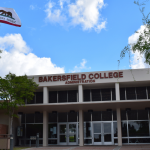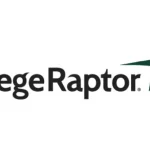FAFSA completions are down 16% in 2020, compared with 2019. Many colleges are taking some innovative steps to reverse the trend.
Here are 10 notable actions that college administrators can put into action today to combat FAFSA declines:
1. FAFSA Drive Thru’s
Consider hosting a “FAFSA Drive Thru” using campus parking lots with internet and staff to assist students and families.
2. Virtual FAFSA Completion Events
In New York State, “Start Here, Get There”, a program of the NYS Higher Education Services Corporation, has partnered with two state agencies to create virtual FAFSA events that provide families with free online professional assistance with completing 2021-2022 college financial aid forms. This is one idea that is not limited to a single state.
3. Develop or Emulate a FAFSA Toolkit
Many colleges and state agencies have developed FAFSA toolkits that include calendars, communication templates, and other resources that can help drive FAFSA awareness and completion. New York State has a fairly extensive toolkit that stands as a model that others may want to emulate.
4. Screen Share Workshops
Consider hosting screen share workshops using popular software such as Microsoft Teams or Zoom. Use the opportunity to connect more directly and walk students and parents through the FAFSA. It’s an opportunity for a one-to-many counseling session.
5. Virtual Classroom Presentations (or live when the pandemic is over)
Coordination with faculty on the FAFSA is a great way to engage with students. Ask faculty for 10-15 minutes of time at the start of a class session to remind students about the FAFSA process, upcoming deadlines, and inform them of the resources that are available to them.
6. FAFSA Webinars
With in-person opportunities limited during the pandemic, consider hosting a webinar on the FAFSA for students and parents that are part of your school’s community. Software makes it easy to share PowerPoints, PDF files, and online tutorials. Make the session interactive, fun, and engaging for greatest impact.
7. Text Campaigns
Text messaging has a 98% open rate! It is a great way to engage with students. Keep the messaging short and sweet. Remind students about the FAFSA deadlines. Reach out to determine if a student needs help.
8. Nudge students
Nudge students to follow through and streamline the completion process. Target students who are most at-risk or have stalled within the process. Use texts to get a pulse on student intent and focus your staff time and energy on students that will benefit most from your time and attention.
9. 24/7 AI chatbot
Office hours are normally 8am – 5:30pm. What do you do after 5:30? Or when your office is closed on the weekends? An AI Chatbot is working while you’re not. It can handle inquiries and conversations 24/7, tackling all routine questions (Tier 1) and certain individualized questions (many Tier 2 questions) and routing students to the appropriate work-flows and resources. It’s 9pm and a student is struggling or frustrated with a situation. AI Chatbots can provide immediate support, helping everyone be a little more at ease.
10. Video explainers (24/7 access via website and/or AI chatbot integration)
So many repetitive questions, so many repetitive answers. Use the power of online video to make things easier to understand. Provide self-service. Scale your reach to educate students on the FAFSA 24/7.
The Power of Combining Tactics
The list above includes traditional tactics and as well as some more innovative approaches. Each one can be useful on its own. And when tactics are combined, they can drive a coordinated plan of action that drives results.
The final four ideas in particular — Text, Nudge, Chatbot, and Video Explainers — stand out because they can be deployed holistically to truly extend the reach of staff and engage with students 24/7.
Collectively, these technologies enable staff to scale FAFSA outreach campaigns, provide students with self-service support, and free up staff to engage 1:1 with students when it is needed the most.
The Wrap: The FAFSA Engagement Framework
We believe that a successful FAFSA completion strategy relies on three key engagement components — Outreach, Support, and Education. This is a way to put student engagement at the center of the approach. It signals to students that you are looking out for them, that you are accessible if they need help or support, and that they can come to you with questions.
With FAFSA completions down over the past year amid the pandemic, schools are developing creative ways to support students with this process. The list above provides some great ideas and best practices for driving FAFSA completion. We can all learn from what others are doing.















